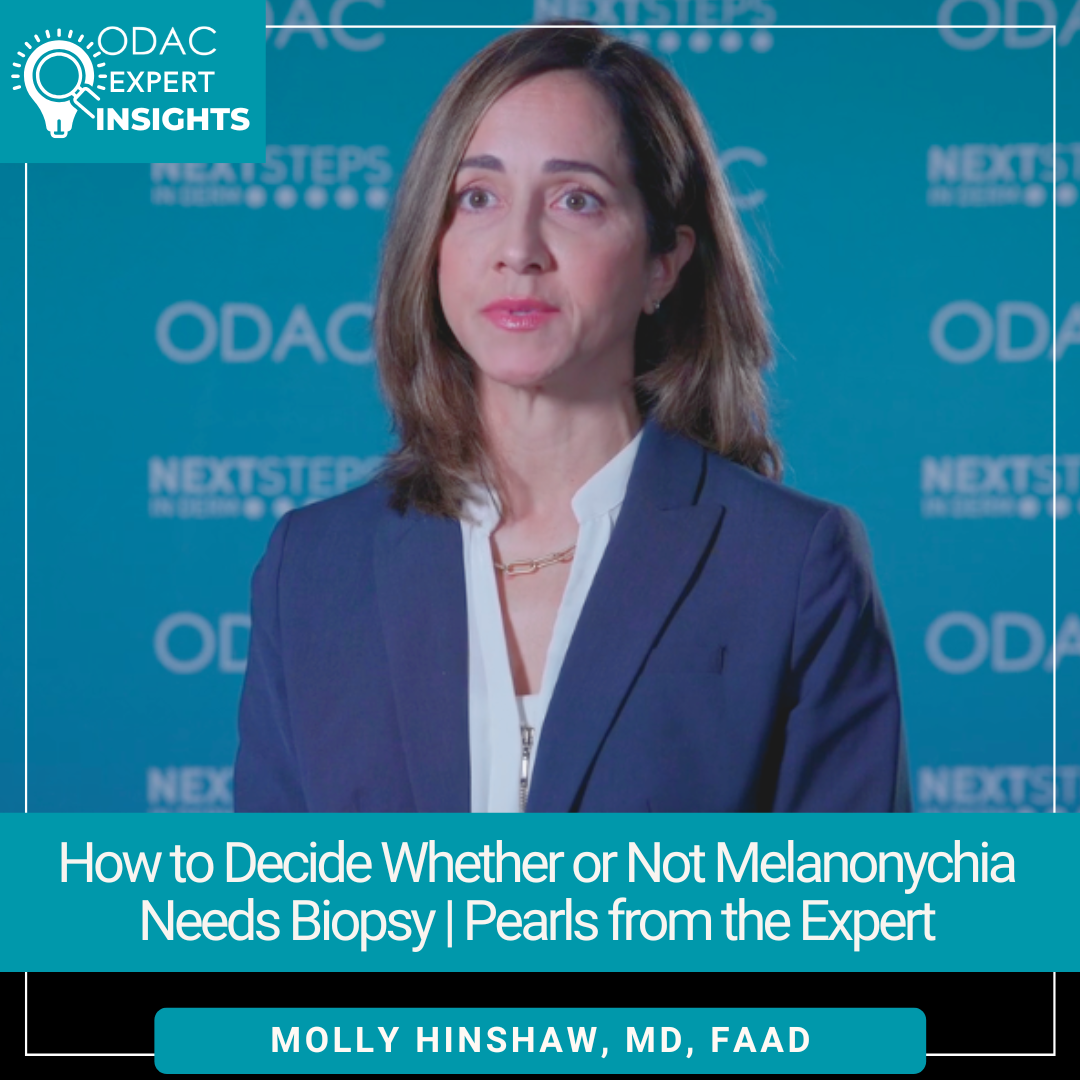A brown or black discoloration of the nail plate can be concerning for both patients and clinicians. Next Steps in Derm, in partnership with the ODAC Dermatology Conference, interviewed Dr. Molly Hinshaw, professor of dermatology, section chief of dermatopathology, and director of the nail clinic at the University of Wisconsin School of Medicine and Public Health. Watch as Dr. Hinshaw outlines how to determine if a melanonychia needs a biopsy. Learn how the background coloration factors in this decision, and what is melanocyte activation. Hear from Dr. Hinshaw which special populations may present with melanonychia that should not be as concerning. When to reassure, when to conduct watchful waiting, and when to biopsy — Dr. Hinshaw shares it all!
Further Reading
If you want to read more about melanonychia and other nail disorders, check out the following articles published in the Journal of Drugs in Dermatology:
Longitudinal Melanonychia Biopsy: What Not to Do
ABSTRACT
The nail matrix biopsy is an important technique in confirming or excluding a diagnosis of melanoma in a patient with longitudinal melanonychia. Dermatologists are the first-line diagnosticians for these pigmented lesions of the nail unit, however, for different reasons, some are reluctant to perform a nail biopsy. This case demonstrates how a poor biopsy technique resulted in a misdiagnosis in a patient with melanoma in situ.
ABSTRACT
Recently, treatment outcomes in patients with toenail onychomycosis have improved considerably due to more effective oral antifungal medications such as terbinafine and itraconazole. These medications can either be used continuously for several weeks at a lower dose or intermittently (pulsed) at a higher dose. Previous literature comparing pulse and continuous therapy has generated mixed results.
Our study aims to compare the efficacy, in terms of clinical cure rate, of continuous vs pulse dose terbinafine regimens for toenail onychomycosis. Sixty patients with onychomycosis of Fitzpatrick skin types IV to VI, between 15 and 65 years of age, were divided into a continuous treatment group receiving 250 mg terbinafine once daily for 12 weeks and a pulse treatment group receiving 250 mg twice daily terbinafine for 1 week repeated every 4 weeks for 12 weeks. Each patient was followed up at weeks 4, 8, and 12.
Efficacy of the continuous treatment group was significantly greater at 76.67% compared with 26.67% in the pulse treatment group. Thus, we conclude that the clinical cure rate of a continuous dose regimen of terbinafine is a superior treatment option for toenail onychomycosis. However, we also suggest further studies including combinations of multiple agents and hybrid regimen models for the optimal onychomycosis treatment.
Did you enjoy this video interview? Find more here.

